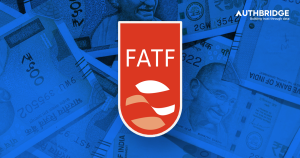Introduction
Healthcare organizations extensively depend on a network of vendors for essential services that range from clinical and support services to IT and data management. The critical nature of healthcare services makes it imperative that these vendors not only deliver in terms of quality and reliability but also adhere to stringent standards of privacy and security. Effective vendor risk management (VRM) is crucial in this sector to safeguard patient information, ensure service continuity, and protect the organization from financial and reputational harm. In an era where data breaches are increasingly common, robust VRM practices help healthcare providers maintain compliance with laws like the Health Insurance Portability and Accountability Act (HIPAA) in the U.S., which emphasizes the importance of safeguarding patient information.
Regulatory Compliance and Data Protection
The healthcare industry is among the most regulated sectors globally. In the U.S., HIPAA mandates rigorous data protection safeguards, requiring healthcare providers and their vendors to ensure the confidentiality, integrity, and availability of protected health information (PHI). Similarly, the General Data Protection Regulation (GDPR) in the EU imposes strict guidelines on data handling and grants significant rights to individuals over their data. These regulatory frameworks make it essential for healthcare organizations to implement a comprehensive VRM program that not only assesses and manages the risk posed by vendors but also ensures that these third parties comply with applicable laws, thus mitigating potential legal and financial penalties.
Planning Your Vendor Risk Management Program
Setting Objectives and Scope
The first step in establishing a healthcare VRM program is to define clear objectives and scope. This involves understanding the specific needs of the healthcare organization and identifying all areas where third-party vendors are involved. Objectives should align with the overall strategic goals of the organization, focusing on minimizing risks related to data breaches, service disruptions, and non-compliance with regulations. Determining the scope involves cataloguing all vendors, assessing the criticality of their services, and understanding the data they access, process, or store.
Assembling a Risk Management Team
A multidisciplinary team should be assembled to manage vendor risks effectively. This team typically includes members from IT, procurement, compliance, legal, and finance departments. Each member brings a unique perspective and expertise, ensuring comprehensive risk assessments, effective mitigation strategies, and compliance with diverse regulations. The team is responsible for developing policies, conducting vendor assessments, implementing risk management strategies, and maintaining ongoing monitoring and compliance checks.
Assessing Vendor Risks
Identifying and Classifying Vendor Types
Vendors in the healthcare sector can range from IT service providers and data processors to suppliers of medical equipment and cleaning services. Each type of vendor presents different risks, necessitating their classification based on the criticality and sensitivity of their service. High-risk vendors, for example, those who handle PHI or are integral to clinic operations, require more stringent assessments and monitoring.
Table: Examples of Vendor Classification in Healthcare
Vendor Type | Description | Risk Level |
IT and Cloud Providers | Manage data operations, software services, and cloud storage. | High |
Medical Suppliers | Supply medical devices and equipment. | Medium to High |
Operational Vendors | Provide facility management, food services, and cleaning. | Medium |
Professional Services | Offer legal, consulting, and management advice. | Medium |
Pharmaceuticals | Supply medications and related clinical products. | High |
Risk Level Criteria
- High Risk: Direct access to PHI, critical to patient safety, or operational continuity.
- Medium Risk: Access to non-PHI data or provides non-critical services but could impact operations if compromised.
Conducting Risk Assessments and Audits
Risk assessments are vital to identify, evaluate, and prioritize risks associated with each vendor. This process includes reviewing the vendor’s security policies, compliance with relevant regulations, financial stability, and operational resilience. Audits are performed regularly to ensure ongoing compliance and to identify any changes in the vendor’s service delivery that might affect risk levels. Tools such as standardized questionnaires, on-site visits, and third-party audits are used to gather necessary information and assess compliance.
Risk Assessment Process
- Security Measures: Adequacy of cybersecurity measures such as firewalls, encryption, and intrusion detection systems.
- Compliance Track Record: History of compliance with industry regulations such as HIPAA.
- Operational Reliability: Ability to maintain service quality and delivery without disruptions.
- Financial Stability: Economic health to fulfill contractual obligations over the contract term.
Table: Risk Assessment Metrics
Metric | Description | Impact |
Data Breach History | Past incidents of data breaches and their scope. | Direct, High Impact |
Regulatory Compliance | Compliance with relevant healthcare laws. | Direct, High Impact |
Service Continuity | Ability to ensure uninterrupted service. | Indirect, Medium Impact |
Financial Health | Financial stability and growth indicators. | Indirect, Low Impact |
Conducting Audits
- Scheduled Audits: Regularly planned audits to assess and ensure compliance with all agreed standards and regulations.
- Random Audits: Unplanned audits can help discover issues that might not be visible during scheduled audits.
- Third-Party Audits: External experts can provide an unbiased view of the vendor’s compliance and operational practices.
Risk Assessment Process
- Initial Screening: Preliminary assessment to determine basic compliance with healthcare standards.
- In-depth Evaluation: Detailed assessment including security practices, data handling, and privacy measures.
- Continuous Assessment: Ongoing evaluations to monitor and manage evolving risks.
Risk Factors to Consider
- Security Measures: Adequacy of cybersecurity measures such as firewalls, encryption, and intrusion detection systems.
- Compliance Track Record: History of compliance with industry regulations such as HIPAA.
- Operational Reliability: Ability to maintain service quality and delivery without disruptions.
- Financial Stability: Economic health to fulfill contractual obligations over the contract term.
Table: Risk Assessment Metrics
Metric | Description | Impact |
Data Breach History | Past incidents of data breaches and their scope. | Direct, High Impact |
Regulatory Compliance | Compliance with relevant healthcare laws. | Direct, High Impact |
Service Continuity | Ability to ensure uninterrupted service. | Indirect, Medium Impact |
Financial Health | Financial stability and growth indicators. | Indirect, Low Impact |
Conducting Audits
- Scheduled Audits: Regularly planned audits to assess and ensure compliance with all agreed standards and regulations.
- Random Audits: Unplanned audits can help discover issues that might not be visible during scheduled audits.
- Third-Party Audits: External experts can provide an unbiased view of the vendor’s compliance and operational practices.
Best Practices for Effective Audits
- Comprehensive Scope: Ensure that the audit covers all critical aspects of the vendor’s operations that relate to your organization.
- Actionable Insights: Audits should produce clear findings and recommendations that can be acted upon to mitigate risks.
- Stakeholder Involvement: Engage relevant stakeholders from both the healthcare organization and the vendor to ensure clarity and alignment on the audit process and findings.
Implementing Controls and Compliance
Developing Risk Mitigation Strategies
Once risks are identified, appropriate mitigation strategies must be developed. This could include contract stipulations requiring vendors to meet specific security standards, regular reporting on compliance status, and the implementation of contingency plans in the event of a service disruption. For high-risk vendors, more robust controls may be necessary, such as frequent audits, enhanced data encryption, and detailed incident response strategies.
Ensuring Compliance with Healthcare Regulations
Continuous monitoring and evaluation of vendor compliance with healthcare regulations are crucial. This includes regular updates to risk management policies as new regulations emerge, training for vendors on compliance requirements, and swift action to rectify any compliance gaps. Effective communication and collaboration with vendors are essential to align them with the healthcare organization’s compliance standards and practices.
Monitoring and Reviewing Vendor Performance
Continuous Monitoring Techniques
Technology plays a critical role in enabling continuous monitoring of vendor performance. Automated tools can track compliance with service level agreements, monitor real-time threats, and provide dashboards for an at-a-glance view of vendor risk profiles. These tools help in quickly identifying issues that could impact patient safety or data security, allowing for prompt remedial actions.
Regular Review and Adjustment Processes
The dynamic nature of risk in the healthcare sector necessitates regular reviews of the VRM program. This involves reassessing the risk landscape, auditing vendor performance against compliance standards, and making necessary adjustments to risk management strategies. Regular feedback sessions with vendors can also provide insights into potential improvements and foster better compliance and risk management practices.
Enhancing Vendor Risk Management Practices
Leveraging Technology for Improved Efficiency
The use of technology in vendor risk management can significantly increase efficiency and accuracy. Automation tools can streamline the risk assessment process, reduce errors associated with manual data entry, and provide actionable insights more quickly. Technologies such as blockchain can be employed to enhance transparency and security in transactions with vendors.
Best Practices for Long-Term Success
To ensure the long-term success of vendor risk management practices, healthcare organizations should foster a culture of continuous improvement and compliance. This involves regularly updating VRM processes in response to new threats and changes in the regulatory environment. Additionally, training programs should be implemented to keep staff updated on the latest risk management techniques and technologies.






